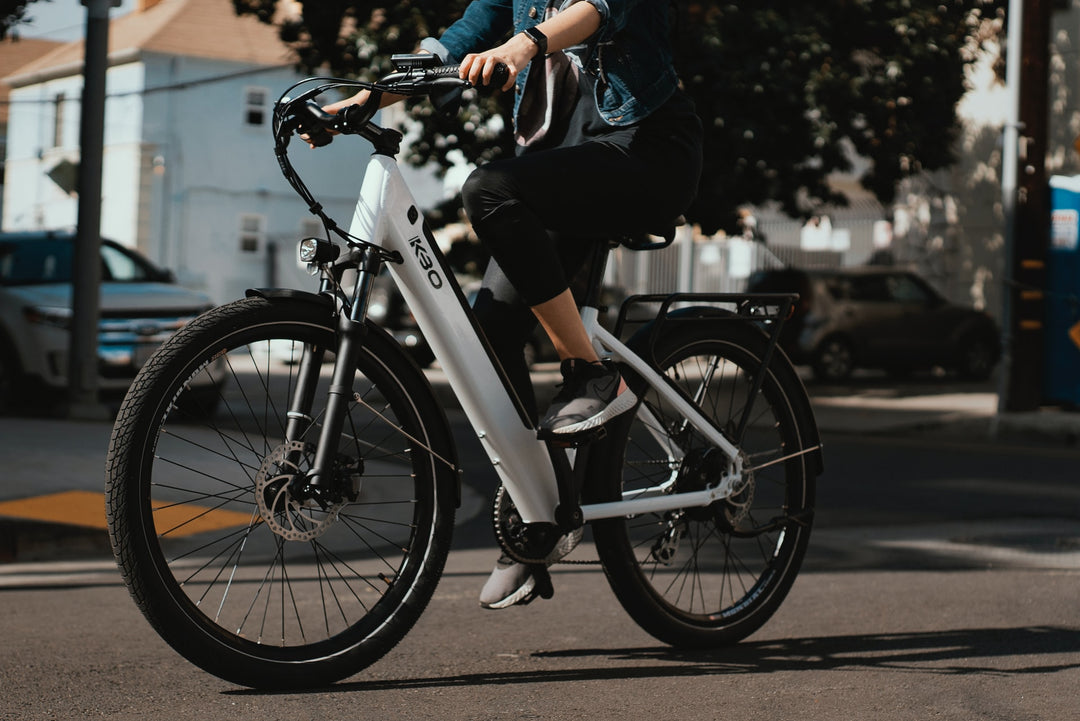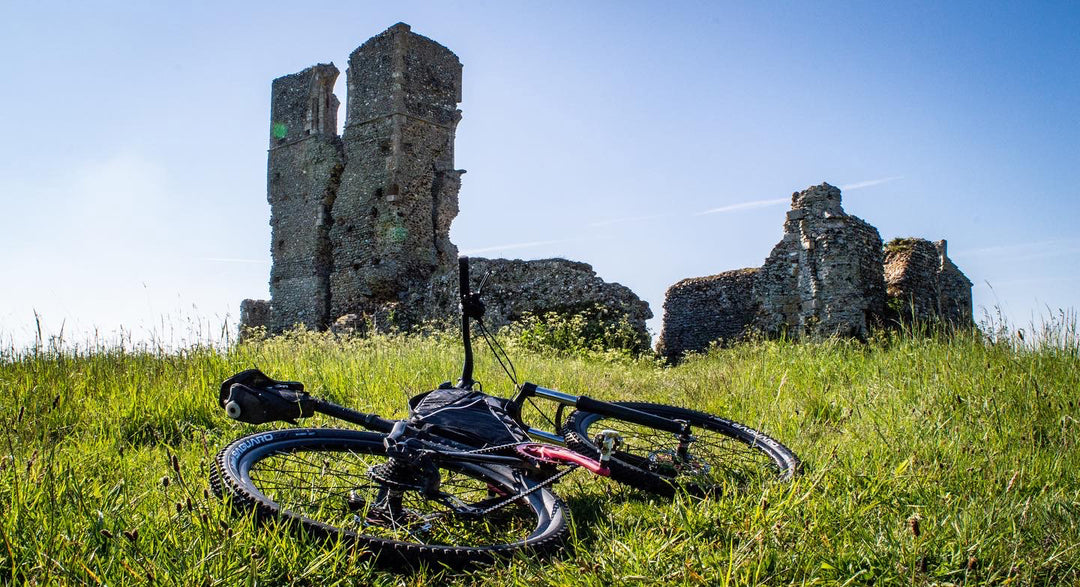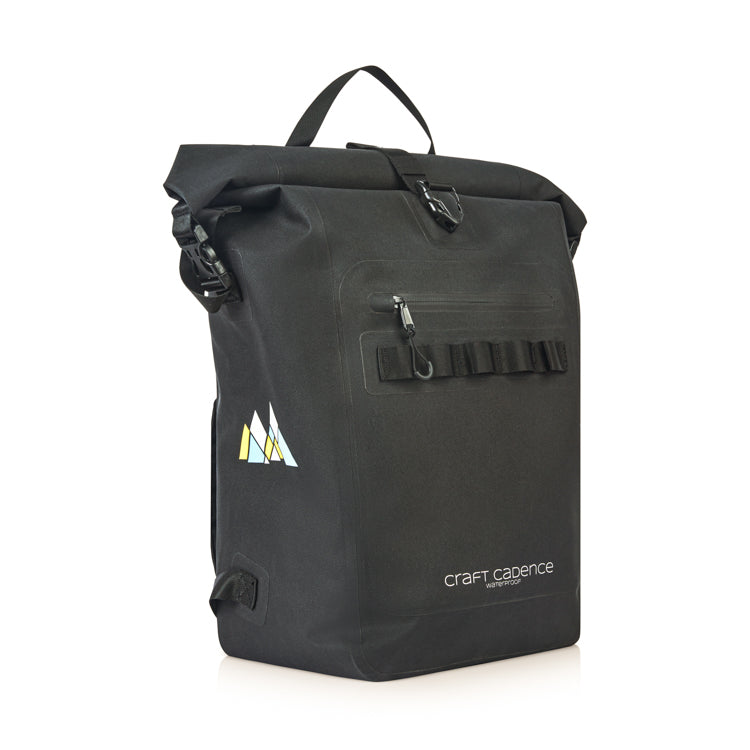E-bikes… should the E stand for eco?

E-bikes are clearly far better for the environment than driving, on any measure – energy use, emissions and embodied energy in manufacture.
That’s a lot of E-benefits. But they can’t compete with your typical mechanical bike, right?
Maybe it’s time to think again.
True, the battery and manufacture of an e-bike has a higher carbon cost than that of a regular bike. Trek estimate that one of their typical electric mountain bikes has a carbon footprint of 229kg of CO2 equivalent emissions (CO2e) – a way of measuring the effect of all emissions involved, not just carbon dioxide. That’s almost twice that of Trek’s most popular entry-level mountain bike, but only 32kg (about 15%) above their flagship carbon road bike.
Want to know how those figures break down? Check out their 2021 sustainability report.
But what does it take to power a bike?

For a wholly mechanical bike, that’s what you ate for breakfast, lunch and dinner. For an e-bike, it’s some of that and some of whatever fuel supplies the charging point you used.
That’s where it gets interesting. In Ethical Consumer’s July issue, they looked at CO2e for typical transport options – car, bus (full, half-full, just you and the driver), train, underground, trams, flying and of course bikes and e-bikes – using the brilliant ‘How bad are bananas?’ book by Mike Berners-Lee, which measures carbon footprint of… well, almost everything.
Did you just eat a banana to fuel your one-mile cycle to the shops? Good on you – they may have come halfway round the world, but that’s just 40g CO2e. If you took the same trip on an e-bike, it’s just over 50g.
Or did you just have lunch at Five Guys and grab a bacon cheeseburger? Well, that would be over 300g CO2e.
Is that a lot? It sure is – it’s about the same as driving a car and six times your e-bike emissions.
If you take out the embodied energy of manufacturing the bikes, the difference is even more startling. And if your e-bike is fuelled by solar panels or a wind turbine, it’s almost mind-boggling. So as e-bikes become more efficient to manufacture and renewable energy makes up more the UK’s fuel mix (and energy used in manufacture), expect those figures to keep improving.
Why is this the case?

Because the human body isn’t especially efficient in converting food into kinetic energy, i.e. moving you. Most of your meals go into simply keeping your lungs inflating, brain thinking, heart pumping and organs functioning.
Walking is even less efficient than cycling. Of course, the combustion engine in a car isn’t renowned for its efficiency in converting petrol to movement either.
Is it really that simple?

Absolutely not. You probably aren’t going to calculate the CO2e of every meal you eat, and you won’t always know what fuelled every charge of your e-bike.
Would you change what you eat to reduce the carbon cost of cycling? Most people probably wouldn’t. Perhaps you cycle because you want to burn off your bacon cheeseburger. And how many calories you really burn whilst riding is highly personal, based on your metabolism, effort, fitness, bike, terrain and so on.
Is this a reason not to pedal on your e-bike?

Or never ride a mechanical bike? Of course not. One of the biggest benefits of cycling is the exercise. Interestingly, a 2019 study of 10,000 people showed that typically e-bike riders cycled further than just pedal-powered cyclists. And many people might not cycle at all if it wasn’t for using an e-bike. But these are averages – how far and often people cycle is very much down to the individual.
The benefits of cycling under your own steam could also prevent the environmental cost of medical treatment years from now. More importantly, you might just be much healthier and happier. But in case you’re interested, the carbon cost of a heart bypass is 1.1 tonnes CO2e.
However, it’s surely a reason for the e-bike not to be seen as the lesser environmental cousin of a purely pedal-powered one. It could even be the superior one.
You might ride an e-bike to travel further, go faster or just make things a little easier. But when you feel that electric support kick in as you climb your nearest and least-dearest hill to the shops, you can give yourself a little e-pat on the back.
And don’t forget to pick up some bananas.
(This guest post was kindly writen for us by Alistair Goulding, who is one of our customers and a writer. He can be contacted via his LinkedIn profile. Our thanks and gratitude to Alistair for donating this article to us.)



